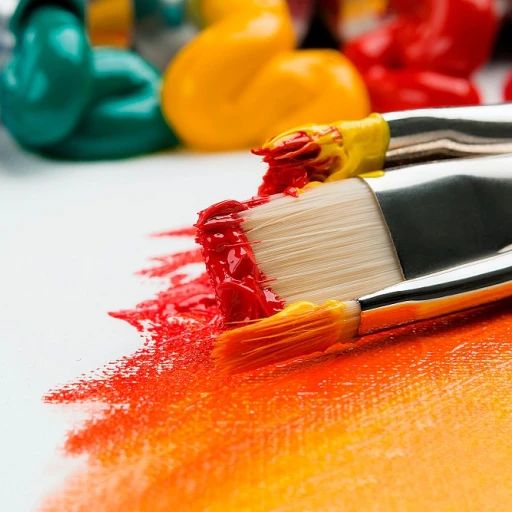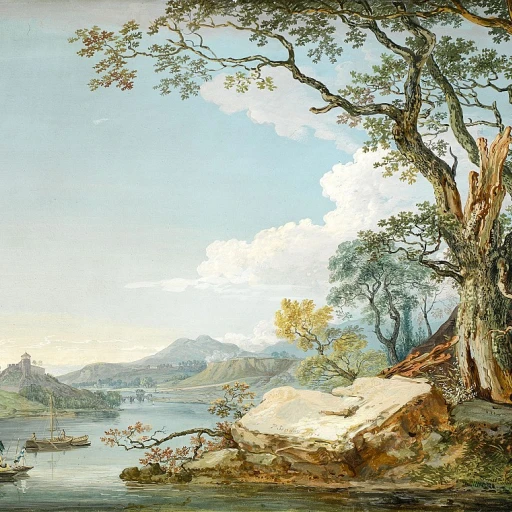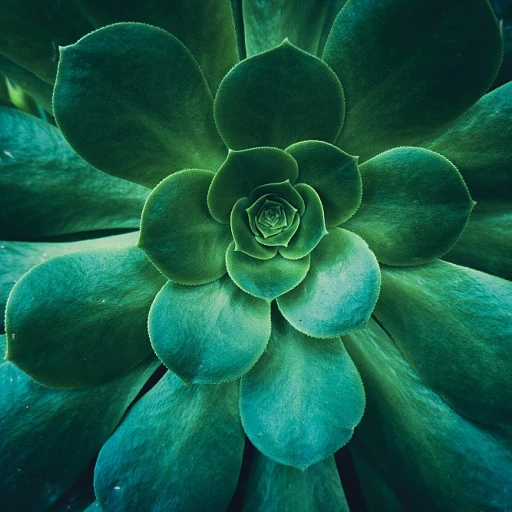-teaser.webp)
The Historical Significance of Egyptian Deities
The Significance of Divine Influence in Time
The ancient land of Egypt boasts a rich tapestry of gods and goddesses that have captivated the human imagination for millennia. Through statues, temples, and art, these Egyptian deities were venerated and are still a testament to the profound influence they held over every aspect of life — from the great pyramids of Giza to the imposing statues at the temple of Luxor Egypt. Statues depicting gods and goddesses were not only symbols of religious devotion but also a demonstration of the power and prestige enjoyed by royalty.
The depiction of deities in sculpture signified both the reverence and the omnipresence of the gods in ancient times. Whether carved from stone at Abu Simbel’s great temple or portrayed as intricate statues, they served as conduits for divine presence within temples and honors bestowed upon the divine.
Many museums today, including the Egyptian museum, host a vast collection of such sculptures. These pieces are not only historical artifacts but also identified as luxury artworks of great value. As one interested in the intersection of history, art, and luxury, diving into the ancient Egyptian period yields insights into the divine tapestry that continues to enthrall art lovers worldwide.
For those considering adding to their personal collection, these ancient treasures represent more than just works of art; they connect us with a civilization that revered mythology, embodying a wide array of symbolism. They hold great cultural significance, allowing collectors to possess a piece of divinity at a significant unit price, reflecting a diverse market that fascinates enthusiasts and historians alike.
Learn more about the art of reduction sculpture by exploring miniature masterpieces that echo bygone eras in their craftsmanship and detail.
Craftsmanship and Materials Used
Masterful Craftsmanship and Exquisite Materials
The allure of ancient Egyptian deities in sculpture is not only rooted in their historical significance but also in the masterful craftsmanship and the exquisite materials used. The artisans of ancient Egypt were renowned for their ability to transform raw materials into stunning representations of gods and goddesses, capturing the essence of their divine subjects with remarkable precision.
Egyptian statues were often crafted from a variety of materials, each chosen for its symbolic significance and durability. Stone, such as limestone and granite, was commonly used for its strength and permanence, making it ideal for statues meant to last through the ages. The Great Temple at Abu Simbel, for instance, showcases the grandeur of stone sculptures that have withstood the test of time.
In addition to stone, metals like gold and bronze were employed to create smaller, more intricate pieces. These materials not only added a touch of luxury but also reflected the divine nature of the deities they depicted. The use of precious metals was particularly prevalent in statues of royalty and high-ranking gods, underscoring their elevated status within the pantheon.
Wood was another material used, often in combination with others, to create statues that were both lightweight and detailed. These wooden sculptures were sometimes adorned with gold leaf or inlaid with precious stones, enhancing their visual appeal and symbolic power.
For collectors and enthusiasts, the craftsmanship of these ancient pieces is a testament to the skill and artistry of Egyptian artisans. The intricate details found in these sculptures, from the delicate features of an Egyptian goddess to the imposing presence of a god, continue to captivate and inspire. For those interested in exploring the artistry of reduction sculpture, this blog post offers insights into techniques that echo the precision of ancient Egyptian craftsmanship.
As we delve deeper into the symbolism and iconography of these statues, it becomes clear that each piece is more than just a work of art; it is a window into the beliefs and values of a civilization that has left an indelible mark on history.
Symbolism and Iconography
The Rich Tapestry of Symbolism and Iconography in Egyptian Deities
In the realm of ancient Egyptian statues, the symbolism infused into each piece holds a substantial weight. Every detail, from the posture of the god or goddess to the items they hold, is permeated with meaning, often tied to the societal values and religious beliefs of the time. These statues served not just as art, but as vessels of cultural narrative. For instance, the integration of iconographic elements in each sculpture, such as the common solar disc above the head of a deity like Ra, conveys Egypt's reverence for the sun as a giver of life. Similarly, the ankh symbol, frequently depicted in the hands of these statues, represents eternal life. These symbols are not merely decorative; they encapsulate the Egyptian perspective on immortality and divine power. Moreover, the choice of animals, such as falcons or cats, often represents the traits those creatures symbolized—strength, protection, and grace. The goddesses, frequently shown with the head of a lioness or a cow, illustrate fierce protection or nurturing qualities, reflecting their roles within the temple rituals and everyday Egyptian life. The blending of symbolism and iconography in these statues embodies more than their religious importance; they also reflect craftsmanship techniques and artistry seen in other luxury art disciplines The mastery in floral sheeting can similarly be traced to these ancient practices of embedding deeper meaning into every unit of art. The deeper understanding of symbolic representation allows collectors to appreciate the intricate stories that these statues tell, making them a valued addition to any collection interested in ancient art. They remain a testament to the rich tapestry of beliefs, conveying messages from a civilization that continues to mesmerize us through its art and statuary.Collecting Ancient Egyptian Statues
Acquiring and Curating a Collection
Collecting ancient Egyptian statues offers aficionados not only a chance to explore the rich history of Egypt but also a unique opportunity to own a piece of antiquity. Statues depicting Egyptian deities, marked by exquisite craftsmanship and steeped in symbolism, are treasured items for any devoted collector. For those venturing into the acquisition of these artifacts, it's crucial to consider several key factors:- Provenance: The authenticity of any art piece is vital. Investigating the origin and history of a statue ensures it's not only genuine but rightfully acquired. This due-diligence safeguards against unlawfully obtained artifacts, which is important for ethical collecting practices.
- Condition and Restoration: An ancient statue’s condition significantly influences its value. Collectors must scrutinize the quality of materials and any restoration work performed, understanding that both can alter the piece's historical integrity and market price.
- Price Considerations: The market value of ancient Egyptian statues varies widely, influenced by rarity, craftsmanship, period of origin, and historical significance. Museums such as the Egyptian Museum or the temples at Luxor often provide a benchmark for typical price ranges. For serious collectors, understanding the dynamics of the market, including price fluctuations, is essential.
- Symbolic Appeal: Each deity statue carries its unique symbolism—whether it's a god renowned for its wisdom or a goddess symbolizing fertility. Collectors often seek pieces that resonate personally or complement an existing collection theme.
- Ethical and Legal Considerations: Modern preservation concerns insist on ethical practices in the art market. Many countries, including Egypt, have stringent export controls on antiquities to protect their cultural heritage.
The Market for Luxury Egyptian Art
Evaluating the Luxury Market for Egyptian Sculptures
The allure of Ancient Egyptian statues in luxury art circles has seen an increase in both interest and value, capturing the admiration of collectors around the globe. Egyptian deities, depicted through votive statues and intricate carvings, not only reflect historical significance but also embody the height of ancient craftsmanship, making them prized possessions. In today's art market, the reputation of Egyptian antiquities for being both precious and rare means that their unit price can vary greatly, influenced by factors such as provenance, condition, and the deity depicted. Statues of notable gods and goddesses, and those hailing from renowned sites such as Luxor, Egypt or the Great Temple of Abu Simbel, often command higher prices. Collectors with an eye for ancient Egyptian art frequently seek out statues from significant periods like the New Kingdom or those featuring beloved deities like Horus or Isis. Auction houses and galleries specializing in ancient artworks are pivotal in the trade of these statues. Institutions like the Egyptian Museum are renowned for their extensive collections, setting benchmarks for authenticity and value. Moreover, smaller units, replicas, or artifacts from lesser-known temples like Giza or Temple Luxor can also be found in online marketplaces, where free photos and royalty-free images of these items often accompany more affordable pieces. Understanding the price dynamics is integral to collecting, as market fluctuations in ancient Egyptian art are constant. While a great stock of statues might be available, discerning collectors often gravitate towards items with traceable lineages and exceptional craftsmanship. The statues' ties to ancient temples and royalty augment their historical appeal, thus influencing their market value. As interest in collecting Egyptian statues surges, prospective buyers must consider ethical concerns and focus on well-documented artworks free from dubious backgrounds. With continued appreciation for the ancient, the market for these cultural treasures promises to remain vibrant, acting as a bridge between modern collectors and the grandeur of Egypt's storied past.Preservation and Ethical Considerations
Ensuring the Legacy of Egyptian Art
The preservation of ancient Egyptian statues is a delicate balance between maintaining historical integrity and ensuring ethical practices. These statues, often depicting revered deities and royalty, hold immense cultural and historical value. As such, their preservation is not just about maintaining physical form but also respecting the cultural narratives they embody.
Challenges in Preservation
Preserving these ancient artworks involves addressing the challenges posed by time, environment, and human interaction. The materials used in these statues, as discussed earlier, range from durable stones like granite to more fragile substances like wood and gold leaf. Each material requires specific conservation techniques to prevent deterioration. Museums and collectors alike must invest in climate-controlled environments to protect these treasures from humidity and temperature fluctuations.
Ethical Considerations in Collecting
When it comes to collecting Egyptian statues, ethical considerations are paramount. The provenance of each piece must be thoroughly vetted to ensure it was not acquired through illicit means. This is crucial in maintaining the integrity of collections and respecting the cultural heritage of Egypt. The international art market has seen a rise in demand for these artifacts, with prices often reflecting their rarity and historical significance. However, the unit price should never overshadow the importance of ethical acquisition.
Role of Museums and Institutions
Museums play a critical role in the preservation and ethical display of ancient Egyptian art. Institutions like the Egyptian Museum in Cairo and the British Museum in London are custodians of vast collections, ensuring that these pieces are accessible to the public while being preserved for future generations. These museums often collaborate with international bodies to ensure that the statues are not only preserved but also returned to their rightful places when necessary.
Public Awareness and Education
Raising public awareness about the importance of preserving ancient Egyptian statues is vital. Educational programs and exhibitions can help foster a deeper appreciation for these artworks, highlighting their historical significance and the craftsmanship involved in their creation. By educating the public, we can ensure that the legacy of ancient Egypt continues to inspire and inform future generations.














